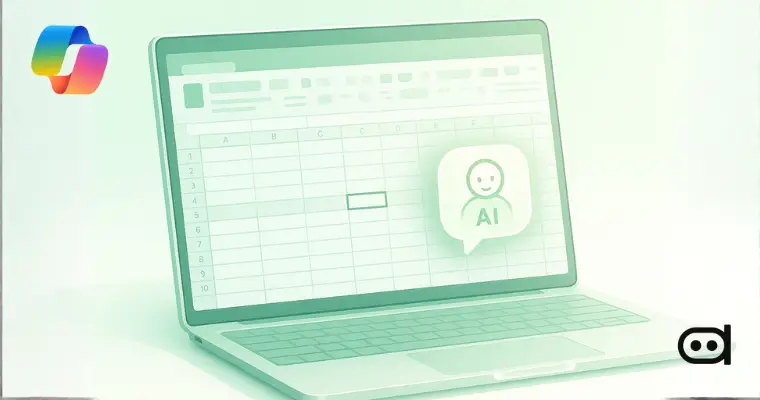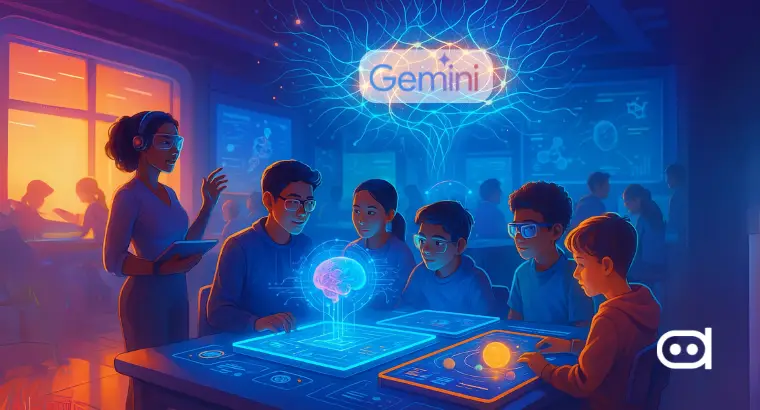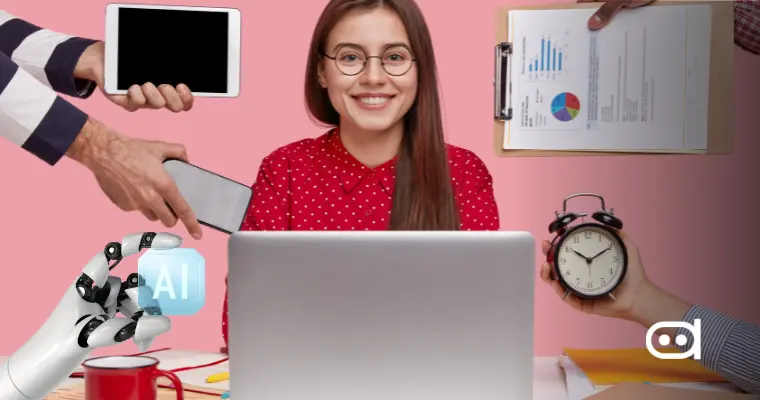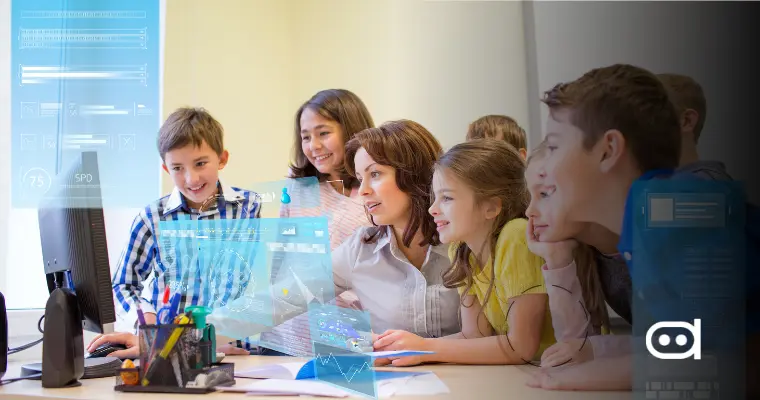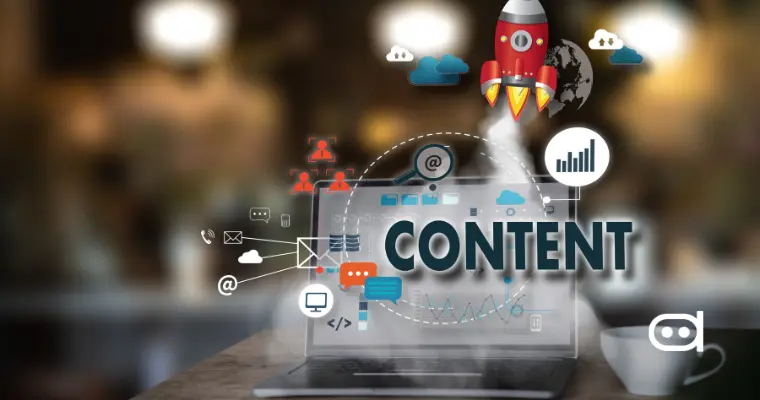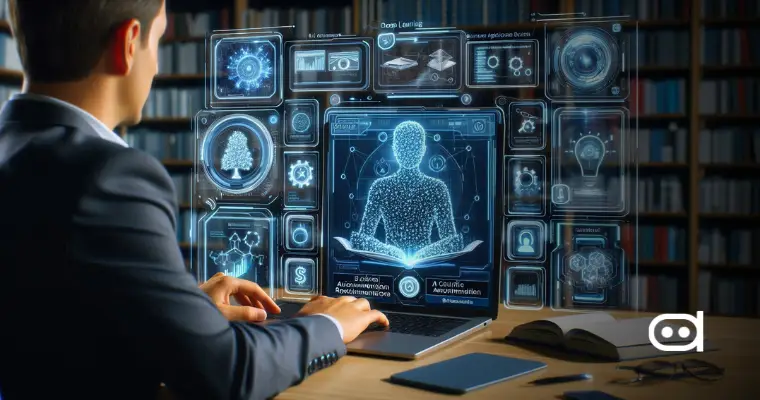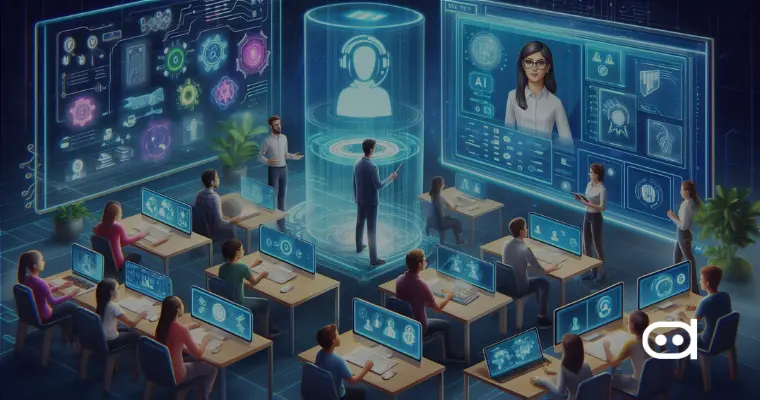
Artificial intelligence is transforming the modes of learning and holds numerous potential possibilities for teaching and learning. AI tools for classrooms provide personalized learning experiences while also reducing administrative responsibilities and enabling educators and students to access next-generation education. This shift is supposed to increase educational quality while also preparing students for a technologically advanced future. A significantly better understanding of how to use these AI tools will propel modern teaching approaches toward innovation and dynamism at any institution.
If you’re wondering how to use AI in the classroom, then these tools possess the ability to confront age-old challenges such as big classrooms, diverse learning conditions, and limited teacher resources in the education sector. These tools assist schools in bridging educational gaps and providing high-quality education to students from diverse backgrounds. The integration of AI into classrooms creates a paradigm shift and thus lays the foundation for a more equitable and efficient educational system.
Benefits of AI in the Classroom
How can AI help teachers in the classroom? Here are some benefits:
Enhanced Learning Experiences
An important thing that artificial intelligence can do is offer individualized learning paths to students, guiding them at their respective paces. Adaptive learning systems quantify a student’s performance almost in real-time, offering various lessons or activities while delving deeper into subjects. A more individualized approach to education may lead to increased student involvement and, as a result, better outcomes.
Time-Saving Tools for Teachers
Grading, taking attendance, and scheduling lessons are repetitive, time-consuming activities. Automation can reduce the extensive hours and resources required for these tasks. Such huge time savings allow teachers to spend more time creatively planning lessons or interacting with students. For example, automatic grading systems can instantly give feedback to both educators and learners.
Access to advanced learning resources
AI-based tools, such as virtual tutoring, smart learning, and AI-driven insights, activate advanced student resources. They enable applications ranging from simulation to augmented reality (AR) apps and AI-assisted research to deliver effective learning while also expanding in-depth learning opportunities for complicated subjects.
How Can Teachers Use AI in the Classroom
AI tools that personalize student learning, automate administrative work, and provide instant feedback to teachers can transform the classroom into an efficient and engaging environment. Let us learn how AI can help teachers in the classroom. Here are some of the most common benefits of using AI in the classroom:
Customized Learning Platforms
With the help of AI-powered platforms, teachers can design personalized educational experiences that speak to individual learning styles and needs. AI tools are enhancing personalized learning in education by adapting dynamically to student progress, ensuring consistent growth.
Such platforms may also be able to generate reports indicating a student’s strengths and weaknesses, allowing teachers to intervene early and provide individualized attention. Personalized learning platforms that build the interaction between the student and the teacher can help to make teaching and learning more effective and enjoyable.
Intelligent Tutoring Systems
Intelligent tutoring systems provide all-around academic support, assisting students in understanding challenging topics outside of traditional schooling hours. The systems employ conversational AI, which enables students to engage in simulated real-time discussion to resolve their doubts effectively. These technologies and tools aim to enhance classroom learning and foster confidence in each student’s abilities.
Automated Grading and Feedback
An AI-powered tool can evaluate assignments or exam scores promptly and provide helpful suggestions for future progress. It not only saves time, but also provides consistent and objective assessment results. Such tools offer students actionable suggestions for revision purposes, primarily assisting them in improving their learning techniques.
Virtual Reality and Augmented Reality
AI has combined with AR and VR technologies to transform traditional learning into an immersive learning experience. This can include scenarios where students explore a historical site or conduct a scientific experiment with the use of such technologies. Educators can make teaching more engaging and impactful by allowing students to immerse themselves in various scenarios. It lets students take a field trip through time and space, visiting places like Mars’ surface or walking along the Great Wall of China on Google Expeditions.
Challenges for Implementing AI in the Classroom
Data Privacy
Protecting student data is a big challenge to overcome for AI in learning. Schools must develop strong privacy policies and ensure that these AI tools comply with data protection laws to guard against the misuse of sensitive information.
AI systems collect extensive amounts of data to personalize the learning experience. However, without proper safeguards, this information could be at risk. Institutions need to think about cybersecurity measures like encryption and access control to gain trust and provide security to students.
Technology Capabilities
Old devices, limited AI access, and compatibility issues can all impede the full realization of classroom AI implementation. Technology and infrastructural upgrades must be part of the plan to address these limitations.
Most schools, particularly those in impoverished areas, lack the resources required to understand how to use AI effectively in education. The solution involves collaboration by governments, tech companies, and educational organizations to create affordability and scalability.
Identify Your Goals
Establishing specific goals is essential for incorporating AI into schools, enabling the technology to serve specific objectives. Aligning the initiatives with educational strategies also helps institutions measure the success of the implementations and determine whether or not to invest in them again. Educators can better understand which tools and strategies to use by keeping precise objectives in mind.
Educator Support
Professional growth programs play a crucial role in school districts, enabling teachers to effectively utilize AI tools. Training seminars and resources may empower educators to feel confident in their understanding and development of AI in their teaching.
Workshops, online courses, and peer collaboration can equip coordinators with teaching skills in navigating AI. Ongoing support will ensure that teachers are flexible and innovative in their classrooms as technologies evolve.
How AI is Changing Classroom Learning and Teaching
AI is adopting a more interactive and student-centered type of approach, thus redefining the classroom and teaching practices. Teachers are adopting AI tools for student behavior analytics, customizing lesson plans, and creating collaborative spaces for learning. Self-directed learning encourages students to explore topics at their pace, and hence it helps in crafting an environment that promotes lifelong learning.
Also, AI transforms the teacher’s role from information provider to knowledge facilitator. This helps students deal with future challenges when they face a rapidly changing world, thus focusing not just on learning but also on critical thinking, creativity, and problem-solving.
Future Scope of AI Integration in Classrooms
AI-Powered Tutors
AI tutors provide students with on-demand availability of academic facilitation by dicing big, difficult topics into small, comprehensible portions and promoting independent learning beyond classroom hours.
Enhanced Student Engagement
AI-enabled platforms such as gamified learning and simulations effectively keep students engaged and motivated and make learning enjoyable and more efficient. Gamified learning encourages healthy competition and rewards achievements, which will create a positive learning atmosphere.
Data-Driven Decision-Making
AI analytical models present data on a student’s performance, attendance, and learning trends to administrators and educators when needed. They assist in delivering well-informed decisions for an entire educational experience.
Teacher Professional Development
AI will help teachers in their personal and professional development, provided they receive the appropriate training and resources. They will be able to equip themselves well for the upcoming technology-infused classroom teaching that is constantly evolving.
There are numerous ways for teachers to use AI effectively in education. AI-enabled portals such as Coursera for Educators offer customized courses and certifications, enabling teachers to take their skills and knowledge further and thus be current with the trends in education. These opportunities give teachers the privilege to thrive alongside their students in an AI-rich environment.
Conclusion
Integrating AI into the classroom has the potential to completely revolutionize the learning experience. AI provides personalized learning, time savings, and advanced tools that empower both learners and instructors. Moreover, it alleviates the issues of data privacy and limitations that technology imposes on educators, thus adding greater robustness to educational facilitation. As teachers adapt to technology, AI in education will open up new opportunities for growth and development for everyone.
